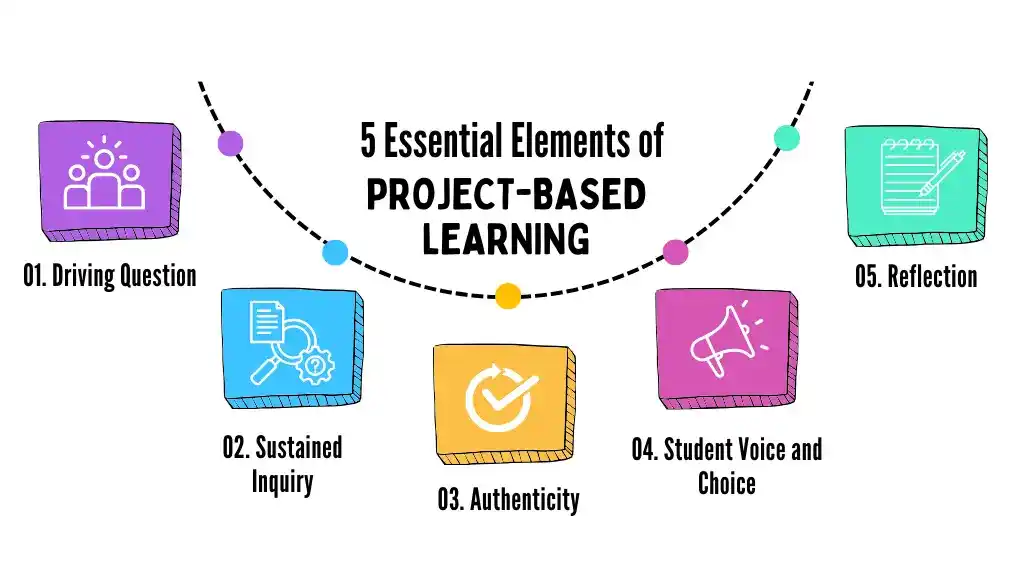Struggling to Keep Students Engaged? Pedagogies That Will Transform Your Classroom
- Teachers
- July 19, 2024
- Viva Education

Have you ever seen a student’s eyes glaze over, during your lesson? It’s like talking to a wall, right? Today’s kids are wired differently; they are driven by a penchant for action, connection and purpose. It leaves many of us wondering as to how we could turn our classrooms from boring places into exciting hubs of learning?
New guidelines like the National Curriculum Framework (NCF) 2023 and the National Education Policy (NEP) 2020 foreground the urgency for transformation in the conventional teaching methods and practices by offering multiple ways to change how we have been teaching so far. They have been executed to help kids think critically, collaborate, and tackle real-world issues.
This blog aims to familiarize you with five transformative Pedagogies designed to boost students’ engagement and transform your classroom into a dynamic and productive space for engaged learning.
5 Pedagogies That Will Change Your Classroom
The five transformative teaching methods we will discuss here constitute the core of contemporary pedagogy in practice. They are instrumental in helping you strategize how to keep your students’ attention and engage them with an outcome-driven approach.
1. Differentiated Instruction (DI)

The first method of the five methods is billed as differentiated instruction. According to this method, every student is unique in their learning style and pace. Differentiated instruction enables you to tailor your teaching so effectively that you can meet the diverse needs of your students and simultaneously, keep them focused.
By using a variety of techniques, such as visual aids, hands-on activities, and educational technology tools like interactive software and online teaching resources, you can effectively address different learning styles.
This method makes it possible for every student to be assisted in achieving his or her potential. Moreover, it makes lessons more interesting, and the process of learning easier with a lot of fun for all students.
Give differentiated instruction a try and you will see your students thrive as they receive personalized learning experiences that resonate with them.
2. Flipped Classroom Learning (FC)

This method of pedagogy and classroom learning is named so because it reverses the conventional methods of teaching. If you follow this method, you will avoid delivering a lesson during class as you may have been doing earlier. Instead of that, you will provide students with a video or article to watch or read at home.
Class time is dedicated to interactive activities, discussions and hands-on learning. Through this approach that emphasizes utmost pragmatism in classroom teaching, you can encourage students to take responsibility for their learning, and be prepared to dive deeper into the material. As a result, students remain actively involved in the process of learning without any chance of distraction.
It allows you to spend more time in class answering individual questions and supervising group projects. Give flipping a shot and see how this method will change the way students participate in and understand lessons.
3. Project-Based Learning (PBL)

This is another effective method that brings out fun in learning through real-life projects.
This method does not call for the physical presence of a teacher to explain a concept. Instead, the students in a classroom have to work on a real project, analyzing problems and coming up with their solutions. PBL fosters problem-solving, creativity and teamwork. Students can apply what they’ve learned, whether it’s about building a model, conducting experiments or presenting their findings.
This method helps maintain students’ interest and their desire to learn, as they can see the outcome of their effort directly. When you use PBL in your teaching, you allow students to learn through experiences that make learning richer and more enjoyable.
4. Collaborative Learning (CL)

This method of learning entails working with other students in a group to solve a particular problem or to understand a topic.
By getting the students to work in groups and engage in collaborative activities, you offer them plenty of opportunities to exchange ideas, learn from one another, and develop social and communication skills.
This method helps in creating a support group in your classroom, making learning more fun and productive. Watch as they support and encourage one another, creating a positive and inclusive classroom environment.
5. Inquiry-Based Learning (IBL)

This method of learning involves a student-centred approach to encourage curiosity and investigation. It focuses on improving the thought process and problem-solving skills of the learners with a deeper understanding of the subject.
This method of learning empowers the students to take responsibility for their learning path. Inquiry-based learning helps students develop a love for learning that lasts a lifetime. Encourage your students to explore, question and watch as they become more curious and enthusiastic about their studies.
Incorporate inquiry-based learning in your classroom to ignite curiosity and inculcate passion for active learning in your students.
Remember: The key to successful implementation of the five methods discussed here is to find the right balance of them aligning with your teaching style and the needs of your students. By putting these strategies into practice, you can create a classroom where students are actively engaged, motivated and ready to take on all sorts of challenges in life.
Conclusion
By adopting and practising these five teaching methods, you may revolutionize your classroom and significantly enhance the engagement of students. Moreover, you can transform the learning experience, making it more dynamic, engaging and impactful.
To cut the long story short, these methods can be instrumental in turning the classroom into a place where students are not only excited about learning but are also empowered to take charge of their education, fostering academic success and preparing them for real-world challenges.



